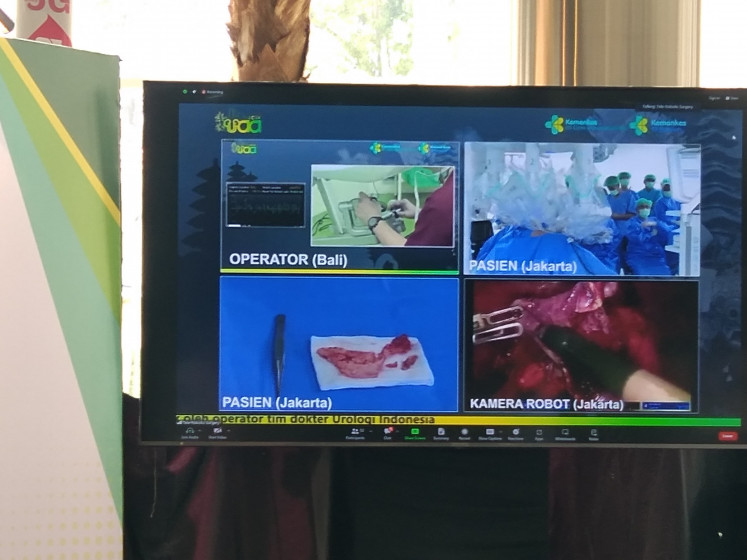Popular Reads
Top Results
Can't find what you're looking for?
View all search resultsPopular Reads
Top Results
Can't find what you're looking for?
View all search resultsWhat to know when cooking Japanese food at home
Change text size
Gift Premium Articles
to Anyone
 For those interested in making sashimi or sushi, fresh and clean ingredients are a must, especially for the fish. (Shutterstock/File)
For those interested in making sashimi or sushi, fresh and clean ingredients are a must, especially for the fish. (Shutterstock/File)
Japanese restaurants can easily be found across the capital, but cooking the food yourself at home is a wholly unique experience.
Syafaruddin, the head chef of Senju Omakase, Teppanyaki & Sake restaurant in Plaza Indonesia, who has been working in Japanese restaurants since 2001, said having high-quality rice was one of the most important factors in preparing Japanese dishes.
"You must have good rice, such as Hitomebore. Other brands, like Kokuho, are also good despite it coming from California," he said.
Originating from Japan, Hitomebore is premium quality rice that offers smooth yet sticky and soft textures with a hint of sweet, suitable for table rice or making sushi. Meanwhile, Kokuho is a medium-grain rice from California that boasts slightly sticky yet tender textures.
Read also: Five common mistakes Indonesians make when eating Japanese food
For those interested in making sashimi or sushi, fresh and clean ingredients are a must, especially for the fish. "If the fish is not yet cut, you can easily observe the freshness, such as from the gill and eyes," said Syafaruddin, adding that fish bought from the supermarket was good enough for making Japanese food.
"For salmon, you can buy from the supermarket and then put salt on it thoroughly and wait for around 15 minutes. Afterward, wash it with iced water three times, using new water each time, to eliminate the saltiness and bacteria," he said. "You can then wait for the salmon to dry or use clean cloth or tissue." Syafaruddin further advised home cooks to serve the sushi or sashimi alongside wasabi, which acts as a neutralizer.
Regarding cooking equipment, he said it would be better to have a special knife for the task. But for those who rarely cook Japanese food, a sharp and clean knife will do.
"Since the ingredients are sensitive, it is also advised to process the food in a room with a stable room temperature," he added. (kes)









